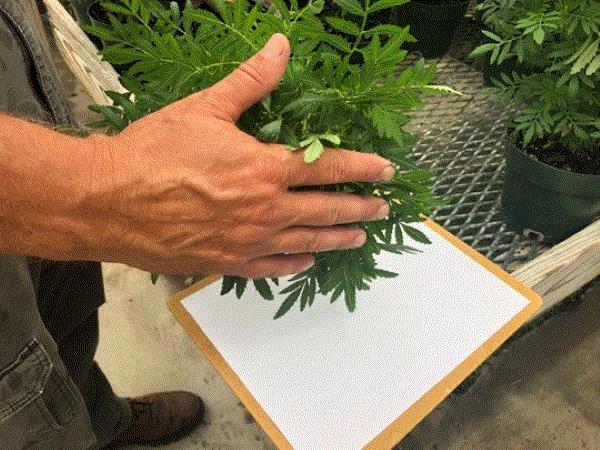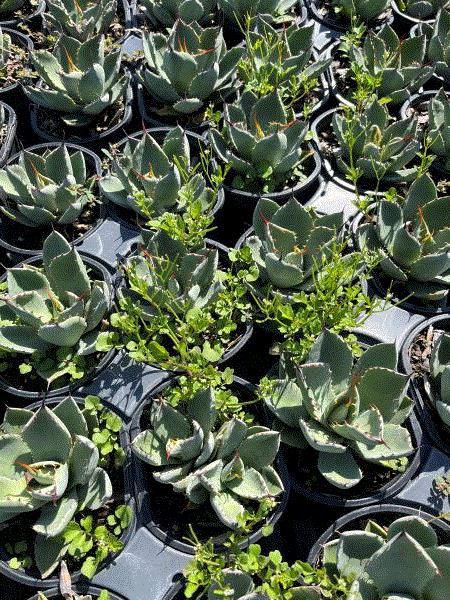Envu Acquires Five Products
Envu announced an expansion of its ornamental product portfolio to include Adept, B-Nine, Floramite, Shuttle and Terrazole. Envu has acquired the marketing rights to these products, currently marketed by OHP, from UPL. Envu will offer them under its own label in January 2025.
This is another significant expansion of Envu’s portfolio since its acquisition of FMC’s Global Specialty Solutions in July. We’re still waiting to see which and how originally FMC’s products will be adopted into Envu’s portfolio.
Adept, B-Nine, Floramite, Shuttle and Terrazole are well-known products. Y’all probably know of them if you aren’t already using them frequently. B-Nine (daminozide) is an old-school plant growth regulator (seriously, older than me and I’m old as dirt according to my nieces). Some of you might have used B-Nine in this year’s poinsettia crop.
Adept (diflubenzuron) is an insect growth regulator (I would say an oft-forgotten one) with strong efficacy against caterpillars, fungus gnats and shore flies.
Shuttle (acequinocyl) and Floramite (bifenazate) are miticides for controlling all life stages of many spider mite species. And Terrazole (etridiazole) is one of the most effective chemistries for preventing Pythium and Phytophthora.

Don’t panic if you have any of these products with OHP’s labels in the storage shed. You can continue to use them according to label instructions until you run out. The new batch of, say Floramite, that you order in 2025 will come with Envu’s label. I compared the OHP and Envu labels of Floramite and found them to be almost identical. (I assume the new labels of other products are also similar to the old ones.)
A few noticeable differences on the new Floramite label include swapping of OHP’s for Envu’s logo, the new Envu label has a slightly different trade name (Envu’s Floramite vs. OHP’s Floramite SC; Don’t laugh—they mean different products in EPA’s eyes), a new EPA registration number, and a newly added section on spray drift management.

Talking about Pest and Disease Prevention
Nick Flax and Paul Pilon are on the same wavelength this month—they have pest and disease prevention on their minds. I thought they had several excellent lessons on prevention that I want to share with y’all today.
Each week, Bill Calkins has a chat with Nick Flax, who’s a technical services expert at Ball, on various floricultural topics and summarizes the conversations on Bill’s Tech On Demand newsletter. This week, Bill and Nick chatted about pest and disease prevention and management.
Nick started with what it means to set a management threshold or tolerance level. It’s impossible to have a “perfectly clean crop,” so it’s important to know where your own threshold or tolerance is, consider the cost of action (or inaction) and manage accordingly. Threshold is correlated with risk (of crop loss or cross-contamination) and varies from one crop to the next. So understanding how the threshold relates to the basic biology of pests and diseases is important. Nick went through an example of making management decisions for powdery mildew to illustrate his approach.
I agree with Nick whole-heartedly that a threshold is “nothing without a robust monitoring strategy.” Nick mentioned four considerations for building an effective and actionable scouting program: commit, give ownership, record and evaluate. Go HERE to see what Nick means by these considerations.

You can scout for mites and thrips using a "beat sheet" method. (Photo: JC Chong.)
Paul Pilon of Opel Growers and editor of Perennial Pulse also talked about pest and disease prevention in his column, Paul’s Pointers, in the December issue of GrowerTalks. Go HERE to read Paul’s column.
Paul’s column focuses mainly on the mechanics of scouting and prevention. Paul has five basics in scouting: do visual inspection weekly, don’t just look at plants on the mina aisles, do “beat sheet” sampling (pictured above; go HERE to see how this can be done for spider mites), use sticky cards, evaluate population trends and commit to the scouting program.
Paul noted that a preventive program isn’t just about scouting, but includes routine biological control, biosolutions and traditional chemistries. Indeed, prevention isn’t only about stopping pest and disease problems from happening; it’s also about stopping them with every tool you have before they become costly.
As Paul said, “Preventive programs not only complement scouting practices, but they also play a key role at preventing problems from occurring and/or keeping small issues from becoming large ones.”

Biosolutions in Propagation
Paul Pilon mentioned using biosolutions in a preventive program against pest and disease outbreaks. (Go HERE to read Paul’s column.) This month’s GrowerTalks also features an article from Jeremy Webber of Koppert on managing pests in propagation using biological and microbiological solutions.
Jeremy outlined the solutions that are available for suppressing pest populations on stock plants and during the rooting and bulking up stages. (This is the first time I learned about “bulking up” as a stage in propagation. Makes sense to me. Learn something new every day!)
Jeremy suggests that maintaining plant health with biological solutions, such as predatory mites, can allow greater vegetative growth on stock plants. (That means more cuttings!) During the rooting stage, fungus gnats can be managed with nematodes and root growth, and seed germination can be enhanced with beneficial bacteria and fungi (such as Bacillus and Trichoderma spp.). A combination of biological control agents and compatible chemistries, as well as mass trapping and continued applications of beneficial bacteria and fungi can prevent pest and disease problems from blowing up during the bulking up stage.
Jeremy’s article very much continues the trend of prevention in Paul’s and Nick’s pieces. It’s always better, to quote Jeremy, “keep them from flaring up and causing significant damage in the first place."
Go HERE to read Jeremy’s article.

Got Weeds in Your Liners?
Jeremy’s article reminded me of something I’d wanted to talk about for some time. Well, now is a good time to (re)visit the topic of managing weeds in propagation.
This is a sensitive topic. (See what I did here? Liners are sensitive. Anyone ...? Anyone ...? Oh, never mind.)
Just like anywhere in a nursery, propagation houses and outdoor liner beds can get weedy. With woody cuttings taking weeks or months to get ready for transplant, weeds have plenty of time to flourish. Understandably, folks are skittish about using herbicides around, not to mention directly over cuttings and newly rooted liners. There are few “safe” herbicides for use on liners outdoors. Your options here are a handful of preemergence (contain oxyfluorfen, oxadiazon, napropamide and s-metolachlor) and postemergence herbicides (contain sethoxydim, fluazifop-p-butyl and clethodim). No herbicide is registered for use in propagation houses or on unrooted cuttings, as far as I know.

Crop safety (particularly safety for root growth) will limit the use of the herbicides mentioned above. Because of its crop safety and low impact on root growth, Ronstar (oxadiazon) seems to be a favorite among the growers I talked to. Go HERE for an article from Joe Neal of North Carolina State University on crop safety of various pre- and postemergence herbicides.
As mentioned by Nick, Paul and Jeremy, prevention is critical to any manner of pest management. If you let weeds establish among your liners, they'll eat you, your crops and your people for lunch. You and your crew) will be spending days (if not weeks) on your hands and knees hand-weeding the liner beds. I don’t want to do that and you certainly don’t!
So prevent weeds from getting into the liner beds and propagation houses through sanitation practices, such as using new and clean liners, pots, trays, media, etc. Pay particular attention to cleaning up weeds around piles of mulch, media, rice hulls, pots, trays, etc., stored outdoors so that seeds don’t sneak in. Also watch where people, equipment, water and wind move in and out of the storage area, so seeds or other crud doesn’t hitch a ride. Kill off weeds in and around the propagation areas or houses using pre- and postemergence herbicides. Keep these areas more challenging for weed establishment by covering the soil with gravel or plastic clothes.
Joe Neal’s article has lots of pointers on how (and what not to do) to manage weeds in the propagation environment. Go HERE for the article.

Salary & Benefits Survey Results Released
Another fun piece to read in December’s issue of GrowerTalks is one by our own Jen Zurko, who summarizes the results from the 2024 (or the 29th) annual survey on wages and benefits. This year, the survey is a partnership between GrowerTalks and AmericanHort, and the data are compiled by Industry Insights.
The four-and-a-half-page report contains lots of valuable nuggets on salaries and benefits offered for various job categories. I’m a sucker for tables and charts, so I was drawn to them immediately. Also included is an interesting tag cloud of key attributes the employers are looking for in their employees.
Go HERE to read the report and find out what these key attributes are.
See y'all next time!

JC Chong
Technical Development Manager at SePRO
Adjunct Professor at Clemson University
This e-mail received by 27,847 subscribers like you!
If you're interested in advertising on PestTalks contact Kim Brown ASAP!